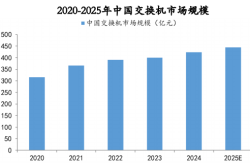Reflections After 618: Domestic E-commerce Seeking Breakthroughs Overseas
![]() 07/08 2024
07/08 2024
![]() 618
618
In the era of domestic e-commerce saturation, cross-border expansion has become a new opportunity.
The past month or so marked the lengthy 618 mid-year shopping festival for e-commerce. In July, e-commerce sellers have already embarked on their campaigns for the second half of the year.
"This year's 618 was the most difficult" and "the most competitive 618 in history" are the genuine sentiments of industry practitioners towards this e-commerce promotion. This year, major e-commerce platforms have undergone significant changes in their competitive strategies, shouting out low-price slogans while striving to optimize services for consumers. The elimination of pre-sales, pay-after-use, and only refund options, among others, have become a competition among platforms in the saturated market to retain users through their service capabilities.
Amid the gradual peaking of traffic and slowing consumption, platforms are under immense pressure, and merchants also face challenges. The comprehensive low prices bring about competitive pressure, forcing merchants to list the cheapest products, surrendering more profits while bearing greater service costs.
Although the 618 promotion has passed, the anxiety about traffic and low prices has not diminished. Platforms are constantly searching for new growth points, and merchants also need to explore new markets.
01
Facing growth bottlenecks in 618, merchants must look outwards

"There isn't much time left for us domestic e-commerce players." A domestic e-commerce seller told Xinshang. After 30 years of rapid development, the domestic e-commerce industry has matured and entered into a competitive saturated market.
The overall growth of domestic e-commerce users has reached its ceiling, making it difficult to acquire new users. According to the 53rd Statistical Report on the Development of China's Internet Network issued by CNNIC, as of December 2023, China's internet user population reached 1.092 billion, of which 915 million were online shopping users.
Competition in the saturated market peaked during this year's 618. Low prices became the main theme, with platforms competing for the "lowest price across the entire network."
Despite strengthening low-price expectations, this year's 618 promotion still struggled to achieve growth. Data from StarChart monitoring showed that during this year's 618 period (from the start of each platform's 618 to 23:59 on June 18), the cumulative sales of comprehensive e-commerce platforms and live streaming platforms reached 742.8 billion yuan, compared to 798.7 billion yuan during last year's 618, a decrease of 50 billion yuan, a year-on-year decline of 7%.
From the perspective of merchants, low prices have helped them quickly capture the market and strive for a larger market share to a certain extent. However, low-price competition has compressed merchants' profit margins, reducing profitability, which is not conducive to long-term business development.
Industry insiders said that judging from this year's 618 promotion, a "price war" is insufficient to describe the competitive landscape of e-commerce platforms, as it has now evolved into a comprehensive competition of product strength, price, delivery efficiency, and after-sales service.
"Both cheap and good," maintaining quality and price, further tests merchants' supply chain capabilities. In this process, domestic sellers have forged diverse capabilities, but the industry is caught in a dilemma of internal competition in the saturated market.
Currently, how to seek long-term survival and future development has become a topic of continuous consideration for most domestic e-commerce enterprises.
Compared to the growth bottlenecks of domestic e-commerce, the opportunities in overseas markets leave merchants with vast imaginations.
According to statistics from the General Administration of Customs, China's cross-border e-commerce exports grew by 19.6% in 2023, far exceeding the overall foreign trade export growth rate of 0.6%. Cross-border e-commerce has become an important driving force for China's foreign trade and a new engine for high-quality development. In the 2024 Two Sessions, cross-border e-commerce has been included in the government work report for the 11th consecutive year, with the emphasis on "actively promoting the healthy development of new business forms such as cross-border e-commerce."
From the perspective of the overall demand side, global shopping continues to shift online. According to predictions, by 2027, the scale of overseas e-commerce outside of China will exceed 4 trillion US dollars, and the growth rate of overseas retail e-commerce will reach nearly twice that of overseas retail.
In addition to retail e-commerce, global B-end procurement is also accelerating its shift online. Grand View Research shows that the online acceleration of global B-end procurement is expected to see rapid growth in the global B2B market at a compound annual growth rate of 20.2% from 2023 to 2030.
Compared to China's e-commerce market penetration rate, the overseas e-commerce market penetration rate is still relatively low. According to a relevant research report from Huajin Securities in February of this year, the global e-commerce penetration rate has steadily increased from 10.4% in 2017 to 19.5% in 2023. In contrast, China's e-commerce retail penetration rate is as high as 47%.
Large scale and low penetration rates have created tremendous growth potential for overseas e-commerce markets. Data released by Amazon also shows that during the 12 months ending in September 2023, the product sales of Chinese sellers on global sites increased year-on-year by over 20%, and the number of Chinese sellers with sales exceeding 1 million US dollars increased year-on-year by over 25%, while the number of Chinese sellers with sales exceeding 10 million US dollars increased year-on-year by nearly 30%.
In the overseas e-commerce market, Amazon is undoubtedly a giant. In the largest North American market, Amazon has maintained its position as the largest e-commerce platform in North America since 2016.

By the end of 2023, Amazon had opened 19 global sites to Chinese sellers. Chinese enterprises can reach hundreds of millions of active consumers through Amazon and connect with global C-end consumers and over 6 million terminal business buyers of Amazon Business with only one Amazon account.
While domestic e-commerce has the 618 promotion, the 10th Amazon Prime Day will be held globally from July 16th to 21st in 24 countries and regions, making it one of the largest online shopping festivals in the world.
During the 2023 Prime Day, Amazon Prime members purchased over 375 million items globally, with the first day setting a record as Amazon's highest single-day sales in history.
After fierce competition in the domestic e-commerce market, a batch of innovative products and brands have emerged, backed by strong supply chains and mature operational experience. It is time for domestic e-commerce sellers to look outwards, seek opportunities in the cross-border e-commerce market, and leverage their global advantages.
02
Transforming into cross-border e-commerce to find new overseas business opportunities

China's e-commerce industry started in the 1990s and quickly developed into an important force in the global e-commerce market, relying on a strong manufacturing base, complete industrial chain, and vast domestic market.
Undoubtedly, domestic e-commerce enterprises possess certain competitiveness in overseas markets due to their strong supply chain resources and rich e-commerce operational experience.
However, domestic sellers also have many concerns about conquering this blue ocean.
First, they need to understand overseas consumers and local market rules. Domestic e-commerce can often sell nationwide with one set of strategies, but in overseas markets, consumer demand varies greatly from country to country. Without precise market research, it is difficult to quickly create popular products. Copying domestic products and marketing selling points may not attract any orders.
Secondly, domestic warehousing, logistics, and express delivery, even pricing, have been standardized. However, cross-border logistics chains are longer and more complex, and fulfillment timeliness directly affects the return rate. For example, if the fulfillment timeliness of an e-commerce package exceeds 7 days, each additional day will increase the return ratio by 2 percentage points.
In addition, domestic sellers face information gaps and need to handle a set of standards such as trademark registration and product certification to ensure that products comply with local compliance requirements, allowing businesses to operate long-term and stably.
These challenges are not insurmountable, and many domestic e-commerce sellers have found successful paths. Yoose, a cutting-edge razor brand established four years ago, achieved a breakthrough in overseas expansion last year.
Traditionally, the technical barriers for razors are relatively low, and product homogeneity is high. However, Yoose successfully created a single product with a higher profit margin than the industry average by capturing the needs of young people. In its first year, Yoose's omnichannel sales exceeded 30 million yuan, and in the second year, it reached 360 million yuan.

Similar to many categories, razors are also a fiercely competitive red ocean segment in China. From Yoose's perspective, China's razor industry is excellent in terms of manufacturing capabilities, cost control, and product quality. However, the razor segment lacks corresponding brands to digest supply chain capabilities.
After achieving success domestically, Yoose also hopes to expand its business growth channels. To leverage the advantages of China's supply chain, Yoose decided to embark on a brand overseas expansion journey.
After detailed research, Amazon's vast traffic and end-to-end overseas expansion solutions sparked great interest from the Yoose team. In early 2023, Yoose first entered Amazon's US site.
Yoose's team has the initial intention of building an overseas brand because they are aware that a product selection approach of "selling whatever is popular" may work for a while but is difficult to sustain long-term overseas development. Therefore, Yoose opened a branded flagship store on Amazon right from the start. By optimizing listings with high-quality A+ pages, including design features, scenario-based images, brand初衷, brand stories, and other content, Yoose vividly showcases product advantages and brand value, strengthening customer purchasing confidence, and achieving good results in subsequent conversions. Simultaneously, with Amazon's rich brand-building tools, it can provide precise support and services throughout the brand's growth cycle from five dimensions: brand strategy, brand image, brand growth, brand users, and brand protection.
With its success on Amazon's US site, Yoose has also expanded its business to Japan, Europe, and Australia, achieving rapid global brand expansion. Although it is the same product, different countries still face different compliance standards in their respective markets. Amazon not only provides simple and efficient seller platform operation tools but also provides compliance guidance for sellers. The Amazon service team promptly explained the compliance requirements of different sites to Yoose, saving them a lot of time and enabling smooth entry into different markets.
Similar to domestic e-commerce, products and operations are equally important overseas. Yoose understands consumers' real needs and feedback through research and Amazon's review management tools, making adjustments and improvements to products based on reviews. Yoose learned that "Western men have longer beards, and the comfortable blade net preferred by Asians is not suitable for Westerners. Compared to comfort, they need a blade net with stronger shaving performance." Based on this, Yoose enhanced the shaving function of the blade net on Amazon's US, European, and Australian sites and used local models, quickly accumulating more fans and receiving numerous good reviews.
As a domestic e-commerce enterprise, Yoose has successfully sold its advantageous products from China's supply chain to developed markets in Europe and the United States, embarking on a successful overseas expansion journey on Amazon and becoming a cutting-edge brand recognized by overseas consumers.
The robust B-end procurement demand in cross-border e-commerce has also allowed many Chinese enterprises to seize opportunities. LACHOI, a brand of scientific research and experimental supplies established in 2013, successfully expanded into domestic e-commerce markets before venturing into cross-border e-commerce in 2022 to explore new growth channels.
A decade ago, when domestic e-commerce was still in a stage of rapid development, many domestic scientific research institutions began to try the new model of online procurement. LACHOI seized this golden opportunity and struck "the first pot of gold" in the scientific research sector. By 2019, its sales through domestic e-commerce channels had reached hundreds of millions. In the same year, LACHOI began to choose independent research and development and manufacturing. With the improvement of product strength and brand strength, finding broader B-end procurement channels became a topic for LACHOI.
LACHOI has accumulated years of e-commerce experience domestically, but its overseas business was still primarily traditional foreign trade in the past. After the pandemic, the rise of online procurement hit the sweet spot of B-end users with strong procurement needs, making scientific research and experimental supplies an emerging track with tremendous growth potential. With Amazon exploring cross-border e-commerce on the agenda, LACHOI first entered Amazon's US and Japanese sites in 2022 and subsequently expanded to European sites. "Entering Amazon is a great opportunity for us to push our brand overseas. We have focused on Amazon overseas because we believe that this direct-to-consumer approach is more valuable for brand development and precipitation."
Feng Jiaxing, the head of LACHOI's international business, pointed out, "Amazon Business has brought LACHOI a large number of high-quality corporate users overseas, including the Massachusetts Institute of Technology, Johns Hopkins University, and others. From small orders initially to single orders worth up to tens of thousands of dollars, they have established long-term cooperation with LACHOI. Since the end of 2022, MIT has placed five orders, purchasing various products such as scales and centrifuges."
Currently, LACHOI has become very proficient in using tools such as business pricing and quantity discounts (BPQD) and plans to bundle products that users often purchase together. Thanks to the advantages of Amazon Business, LACHOI's B-end share has reached nearly 40% in 2023.
As a cross-border "newbie," LACHOI has also encountered some unprecedented issues. For example, compliance certification: cross-border e-commerce for scientific research and experimental supplies often requires obtaining special certifications such as EU packaging laws, Japanese pharmaceutical laws, as well as logistics customs clearance challenges. Through Amazon Logistics (FBA), LACHOI packs powders, liquids, and other items into an integrated package and completes bilateral certification at home and abroad, achieving smooth customs clearance and resolving both compliance and transportation issues.
According to official information from Amazon Global Selling, tens of thousands of Chinese enterprises have joined Amazon Global Selling, and sales are still in a rapid growth period.
03
Leveraging platforms to embark on a path to globalization

Entering the cross-border e-commerce market, the competition for traffic remains paramount. Platforms with high market share, large user bases, and high traffic mean seizing the initiative, which is a tacit understanding among e-commerce enterprises.
So far, a significant amount of authoritative data has shown that Amazon has consistently held a leading position in the market in terms of market share, platform traffic, user engagement, and other core indicators. These platform advantages have constructed a solid bridge for domestic sellers to enter the international market.
Firstly, high market share signifies a large user base, stronger bargaining power, and broader revenue potential. These are key indicators for cross-border sellers when choosing channels for international expansion. For example, in the U.S. market, the latest data from Statista shows that despite the market being crowded with major players, Amazon still holds the top spot with a commanding 37.6% market share, significantly ahead of other platforms.
Secondly, for cross-border sellers, high platform traffic brings more potential customers and improves transaction conversion rates. The number of active users reflects the platform's user engagement and consumption potential, which fosters sales and helps establish long-term customer relationships. According to SimilarWeb's statistics, Amazon currently boasts over 2.659 billion unique visitors, far surpassing the second-place platform's 467 million, solidifying its position as the global leader in e-commerce.
From the seller's perspective, platform traffic and user base are foundational to business growth. However, what directly propels the sustainable development of a seller's international business is the platform's seller service strategies and comprehensive e-commerce solutions. With its excellent and mature supply chain management capabilities, innovative operation tools, and brand-building tools, Amazon has constructed a safe and reliable full-chain service ecosystem for sellers venturing into international markets.
To address the logistics and supply chain issues that concern domestic sellers, such as long delivery cycles, high shipping costs, and cumbersome returns, Amazon has established a vast global logistics network. This includes over 400 operational centers worldwide, a delivery network that covers more than 200 countries and regions, and the availability of Amazon's comprehensive supply chain solutions to Chinese sellers. This ensures products can be efficiently delivered from the production end to customers around the globe.
In 2023, Amazon provided its global Prime members with the fastest delivery service ever, achieving same-day or next-day delivery for over 7 billion items at a price 70% lower than comparable services. In the first three months of 2024, Amazon once again broke its delivery speed records for Prime members, delivering over 2 billion items with same-day or next-day delivery. By March 2024, in more than 60 major U.S. cities, 60% of Prime member orders were delivered the same day or the next day. In London, Tokyo, and Toronto, three-quarters of Prime member orders were delivered within the same day or the next.
For international operations, efficiency and management are also crucial. In this regard, Amazon leverages cutting-edge generative AI and large language model technologies, providing AI tools and various innovative solutions to simplify operations and improve sellers' operational efficiency, allowing them to focus on business growth.
Clearly, Amazon is fully committed to helping Chinese sellers capture the overseas e-commerce market through its extensive services. Thanks to this support, Amazon has become the most satisfactory channel for most Chinese sellers to expand internationally. According to a survey by Amazon Global Selling, over 80% of Chinese sellers consider Amazon their most satisfactory platform for international expansion.
Chinese sellers have become a formidable force on Amazon, continuously achieving business growth and global expansion through the platform.
In recent years, cross-border e-commerce has experienced rapid growth, becoming a new driving force for foreign trade expansion. While domestic e-commerce faces bottlenecks, overseas markets show potential. With Amazon's comprehensive end-to-end solutions and top-notch service ecosystem, cross-border e-commerce offers a unique opportunity to promote Chinese products and brands worldwide.








